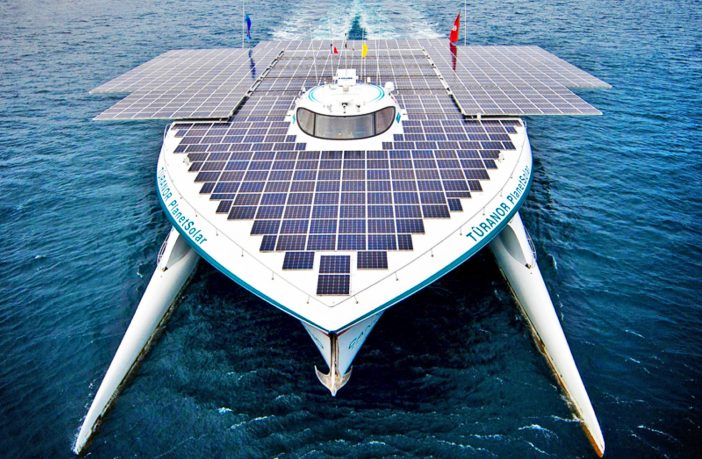- A group of Chinese scientists has simulated the effects of the marine environment on the performance of PV systems installed on large ocean-going cargo ships and has found that there are differences between the effects of salt spray and seawater on the panels’ electrical output characteristics.
The researchers explained that the marine environment has a strong influence on the module surface, via salt and water vapor mixed with acid and basic substances, noting that previous research focused mainly on the damage caused by seawater corrosion and salt particles. “Under seawater corrosion, black spots of corrosion on the surface of the glass of PV modules are formed, with further decrease of the spectral transmittance and [they can]even cause irreparable physical damage,” they stated. “Although the marine environment is highly corrosive, it takes a long time for tempered glass to be severely corroded. It may be more urgent to pay attention to the influence of marine environmental factors on the electrical output characteristics of the PV module.”
The impact of salt spray and seawater on a PV system is described by the academics as a dynamic process through which salt spray creates a layer on the module, thus forming a water film on its surface. “At the same time, the seawater will also cover the surface of the PV module,” they emphasized. “When the salt spray and seawater evaporate, the salt particles are left on the surface of the glass cover plate.”
The Chinese group built an experimental platform consisting of a main workbox, a sample holder, a modular lighting system, and a water circulation system. Mini solar panels, with a power output of 10 W each, were placed horizontally on the sample holder and humidity, radiation, and temperature sensors were used to collect environmental parameters. Artificial seawater with a concentration of 3.5% and a pH value of 8.2 was used for the experiment. The performance of the PV system was evaluated through the tester PROVA210.
Salt spray
Through their analysis, the scientists found that the solar irradiation hitting the module surface was considerably lowered after the salt spray was sprayed. “This weakening effect has a stronger impact on the electrical output of the PV modules than the positive effect brought by cooling, resulting in the decreasing power output,” they highlighted.
When no more salt spray was sprayed, the solar radiation levels on the panels increased again, which shows, they went on to say, that the effect of salt spray is greater on solar irradiance than on temperature. “The combined influence of water spray on the electrical output characteristics of [a]PV module manifests as a maximum power reduction of about 6%,” the research team further explained. “When the PV modules are used in inland rivers, and other areas with easy-to-condense water, the water mist generated in the environment will also have a similar influence on the electrical output characteristics.”
Seawater
When analyzing the effect of seawater, the researchers found that it has a significant cooling effect due to evaporation and heat absorption, and those can even raise the module yield by up to 20%. When the water evaporates, however, salt crystals gradually attach to the module surface and this makes solar irradiance spread uniformly on the glass cover.
“As a material with a low thermal conductivity, salt particles block the heat transfer of [the]PV module, making it difficult for the PV module to release its own heat, leading to a temperature rise,” they added, noting that the salt particles also weaken the light transmission of the module as a whole. “Although the cooling effect of seawater attached to the surface of [a]PV module is obvious, it will be temporary if there is no subsequent seawater scouring.”
The combined influence of salt particles, as a heating agent and a factor reducing solar radiation, resulted in a 10% yield reduction for the experimental PV system.
The scientists concluded that more research is needed to understand completely the dynamics of the coexistence between salt spray and seawater. “The resulting changes to the PV module output are often very complex, and it can lead to increases or decreases in the PV module output,” they stated. “Meanwhile, considering the rain, salinity of seawater, and other factors, the salt deposition will be slower, which will also affect the PV module output.”
The experimental set-up was presented in the paper Effects of marine environment on electrical output characteristics of PV module, which was recently published in the Journal of Renewable and Sustainable Energy. The research group comprises scientists from the Wuhan University of Technology and China’s National Engineering Research Center for Water Transport Safety (WTS Center).
Author: Emiliano Bellini
This article was originally published in pv magazine and is republished with permission.











